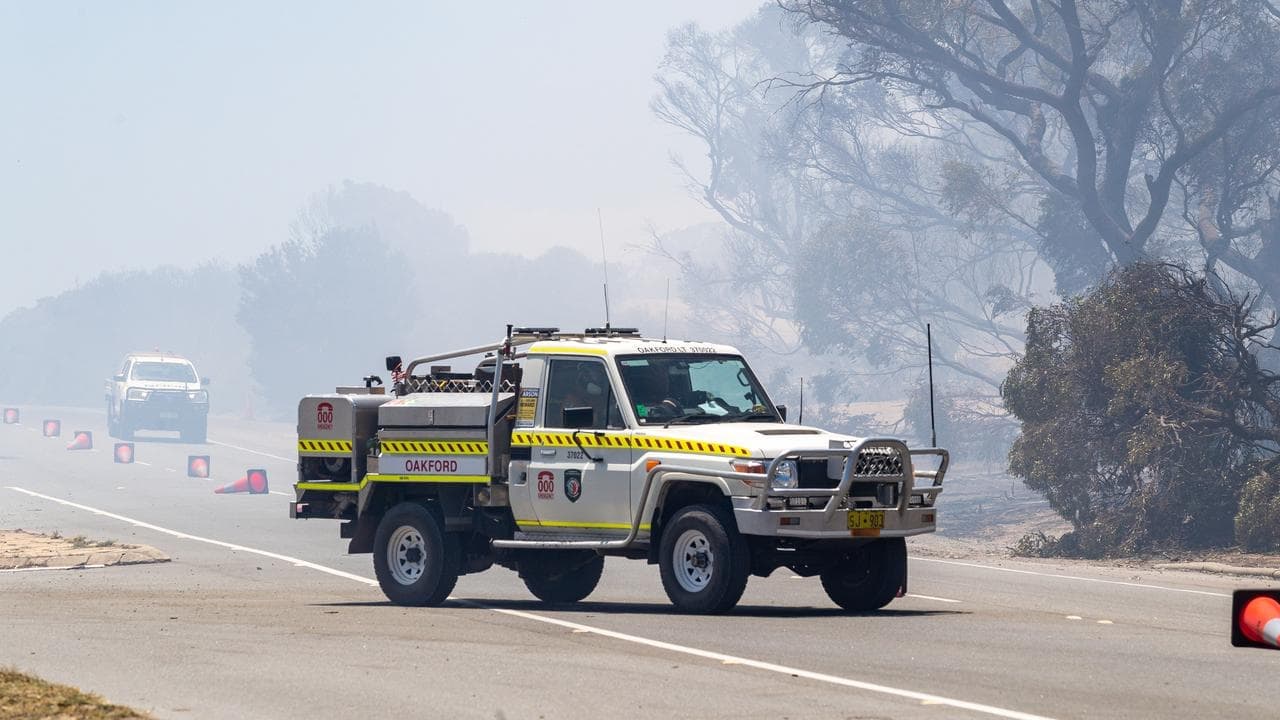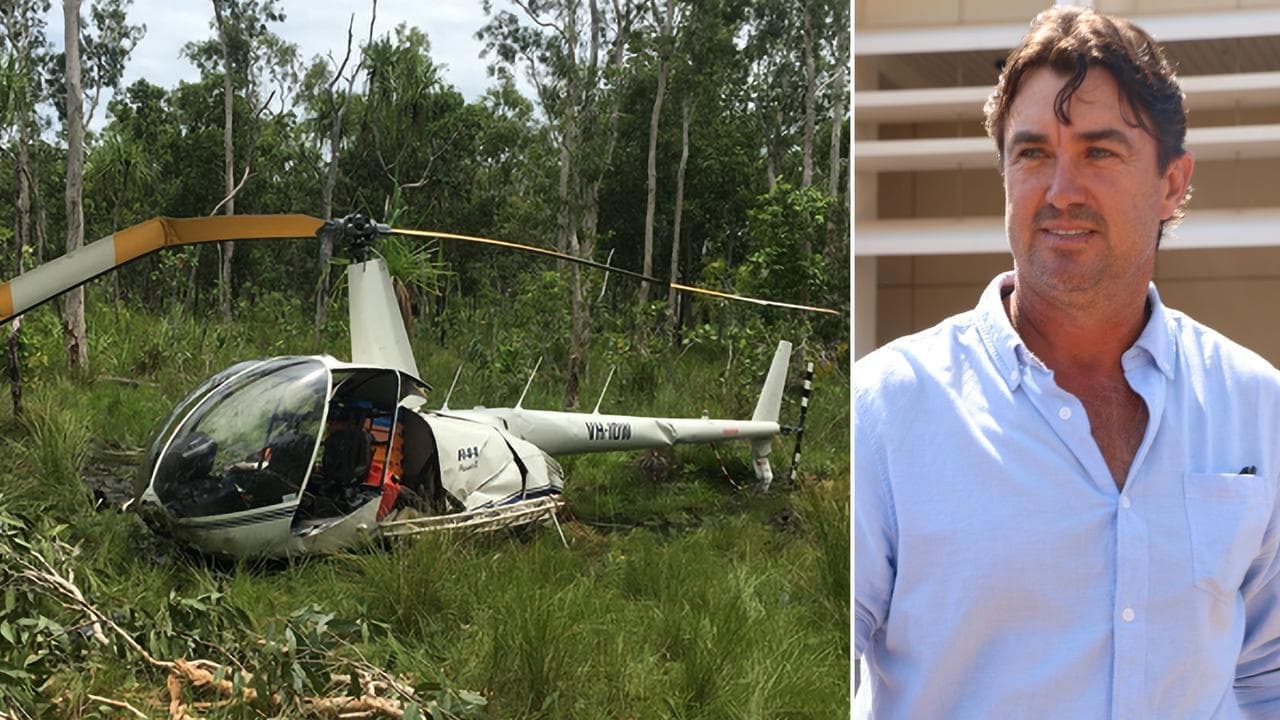AAP FactCheck Investigation: Has there been no warming of the planet in the past 22 years?
The Statement
"According to this graph, there has been no net warming in the last 22 years."
Rowan Dean, Sky News host, January 19, 2021.
The Analysis
Sky News host Rowan Dean has questioned the evidence for climate change, citing temperatures drawn from satellite data to claim there has been no global warming.
However, experts say Mr Dean's apparent "cherry-picking" approach misrepresents the climate data and relies on figures that don't properly gauge worldwide temperature changes.
In a segment on January 19, Mr Dean - who has previously called climate change "the biggest hoax of them all" - claimed climate activists had "disappeared under the doona" during a cool Australian summer, going on to question whether global temperatures were increasing.
" ... according to this graph, there has been no net warming in the last 22 years," he told viewers.
Mr Dean then pointed to another graph which he said showed the planet had cooled by half a degree in the last 12 months. AAP FactCheck previously fact-checked that claim from Liberal MP Craig Kelly as false.
AAP FactCheck analysed Mr Dean's statement that data showed there had been no net warming of the Earth in the past 22 years.
Mr Dean did not respond to emails asking for the basis of his statement. However, in the Sky News segment he said the claim was based on figures from US agency the National Oceanic and Atmospheric Administration (NOAA).
The graph Mr Dean referred to shows satellite temperature data for the lower atmosphere developed by researchers at the University of Alabama in Huntsville (UAH).
The NOAA publishes a record of this temperature data, which it describes as taken in the lower troposphere - or the lowest layer of Earth's atmosphere.
These figures showed temperatures in 1998 and 2020 were close to the same. There was a spike in global temperatures in 1998, which was 0.48C warmer than the 1981-2010 average, used as a baseline. In 2020, the temperature was 0.49C warmer than the baseline.
However, this comparison does not show that there has been no net global warming since 1998.
The same data reveals temperatures have steadily increased since 1979 when longer-term trends are compared. Comparing five-year averages, from 1994 to 1998 and 2016 to 2020, shows a significant rise, from an anomaly of 0.094C above baseline in 1994-98 to 0.418C in 2016-20.
The 10-year average shows temperatures from 1989-1998 were -0.019C below baseline, while 2011-2020 temperatures were 0.275C above baseline.
Pep Canadell, chief research scientist in the CSIRO Climate Science Centre and executive director of the Global Carbon Project, said the climate varied significantly year to year and Mr Dean had seemingly cherry-picked two dates.
"This type of comparison has been used by sceptics forever," Dr Canadell said via email.
"Picking the highest single year maximum temperature and then the lowest single year for a period of time, and making any type of statement is a nonsense when we know the climate varies a lot year to year. That is why we take multi-decadal trends to make any statements as to whether the climate is changing."
He said the El Niño-Southern Oscillation cycle had a very strong effect on a single year of temperatures, and 1998 was considered a "super El Niño", producing exceptionally hot weather.
"The underlying trend is what defines climate. I think any person looking at the graph would reach the conclusion that the climate is warming."
The World Meteorological Organization said 2020 was one of the three warmest years on record, based on the Earth's average surface temperature, and the last decade was the warmest on record.
Victoria University of Wellington physical geography professor James Renwick, who has been involved with the UN's Intergovernmental Panel on Climate Change (IPCC) for several years, agreed the UAH data showed a clear warming trend.
However, Prof Renwick said the UAH satellite series was an estimate of temperatures in the lowest few kilometres of the atmosphere based on atmospheric radiation measurements and it was "fraught with errors".
"The reason the UAH dataset crops up so much in the denialist community is because it is the temperature data set that shows the least warming. But it is one of the least reliable. The curators of the data, Roy Spencer and John Christy, are well-known climate change sceptics."
Dr Spencer has written a number of books that include claims greenhouse gas emissions are not the main cause of global warming and argue against action to curb emissions, while Dr Christy has also questioned man-made climate change.
Prof Renwick pointed to satellite data compiled by a different group of researchers, called RSS, which showed atmospheric warming was even greater than surface warming, according to an analysis in Carbon Brief.
A comparison of the UAH and RSS satellite data shows the latter identified a greater warming trend after 1998. Based on the RSS figures, 2020 was 0.638C above the baseline temperature, while in 1998 the anomaly was 0.421C.
Prof Renwick said surface temperature records taken with land- and ship-based thermometers were generally more reliable than satellite data, and they showed more marked warming.
NASA also said surface temperatures were more accurate than satellite data as satellites measured the brightness of Earth's atmosphere to establish temperature and required complex modelling.
Australian National University Climate Change Institute director and IPCC vice chair Mark Howden said there were four main sources of global temperature data: NOAA, University of East Anglia Climate Research Unit, NASA and Berkley Earth and all showed sustained and rapid warming since the 1970s.
"These reliable records show that the statement that there has been no warming over the past 22 years is simply wrong," Prof Howden said.
He said a strong El Niño in 1998 contributed to a new record global temperature of about 0.6C above the 1951-1980 baseline at the time. Averages from the four sources put the temperature for 2020 at around 0.92C above the baseline.
"Even relatively cool recent years such as 2018 are significantly warmer than 1998. More importantly, there is a clear and highly significant statistical trend upwards in temperature around which year-by-year temperatures vary. It is this trend which is important, not cherry-picking two years for comparison.
"The warming trend is exactly what science has predicted since the first measurements were made in the 1850s of the effects of greenhouse gases on radiative transfer."
Prof Howden said the UAH satellite data "is not a robust measurement of global surface temperatures".
"The problems with relying on satellite measures of temperature alone are well-known - at least since the late 1990s. For such an important topic, it is critical that discussions use the latest and most robust information and appropriate ways of interpreting this."
He said arbitrarily choosing two dates to demonstrate a trend while ignoring all other information has been referred to as the "going down the up escalator".
"Statements such as 'there has been no warming since 1998' is a commonly occurring myth in some social media and other groups which keeps on getting trotted out against the evidence, and no amount of expert debunking or common sense seems to stop it."

The Verdict
AAP FactCheck found Mr Dean's statement that data showed there had been no net warming in the past 22 years to be false.
While one set of satellite data he cited showed similar global temperatures in 1998 and 2020, the same figures showed a clear rising trend throughout this period. Experts said comparing two years in isolation misrepresented the data as climate change analyses were based on longer-term patterns.
In addition, 1998 represented a major El Niño event and a record temperature at the time. Despite this, surface temperature and other satellite data, which experts say most accurately represent the global climate, show 2020 was significantly hotter following a period of pronounced warming.
False – The checkable claim is false.
* Editor's note: AAP FactCheck has expanded its ability to fact-check environmental issues with the support of the Australian Conservation Foundation. AAP FactCheck retains full editorial independence in this project and continues to apply the rigorous standards required for accredited members of the International Fact-Checking Network.












